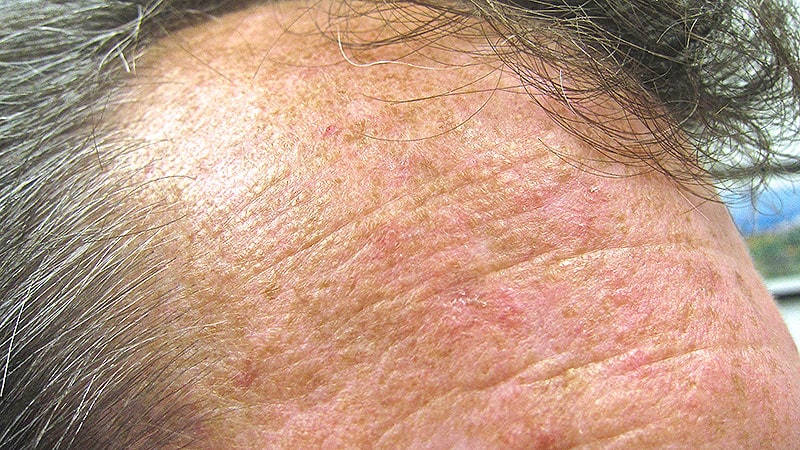[ad_1]
TOPLINE:
About 1 in 15 solid organ transplant patients per year develop actinic keratosis (AK), with men, White individuals, and lung transplant recipients at highest risk.
METHODOLOGY:
- Data analysis was performed on 5484 solid organ transplant (SOT) recipients (mean age, 56.9 years; 61.6% men) from Optum’s deidentified Clinformatics Data Mart.
- The Skin and Ultraviolet Neoplasia Transplant Risk Assessment Calculator (SUNTRAC) was used to identify those at highest risk for skin cancer.
- The mean follow-up duration was 3.5 years.
- The study outcome was AK diagnoses.
TAKEAWAY:
- Overall, 22.4% of patients developed at least one AK posttransplant. AKs were more frequent in men (73.0% vs 27.0% in women), White individuals (86.5%), and lung transplant recipients (14.9%).
- Overall, 81.9% of patients at very high risk vs 6.5% of patients at low risk for skin cancer developed at least one AK.
- The raw incidence rate of the first AK after SOT was 6427.3 per 100,000 person-years (4320.6 per 100,000 person-years for women and 7841.2 per 100,000 person-years for men).
- The absolute risk of developing a first AK increased with time following transplant, particularly in high-risk patients.
IN PRACTICE:
“This study found a high incidence of AKs in SOT recipients, increasing with higher SUNTRAC risk groups,” the authors wrote.
SOURCE:
Lucy J. Navsaria, MBBCh, BAO, MPH, Department of Health Services Research, University of Texas MD Anderson Cancer Center, Houston, led the study. It was published online on February 12, 2025, in JAMA Dermatology.
LIMITATIONS:
The use of the Clinformatics Data Mart limited the generalizability of the study findings. The study relied on International Classification of Diseases and Current Procedural Terminology codes. Since the SUNTRAC rubric assigned 9 points for the White race, the cohort was predominantly White. The study may have underestimated scores for certain patients with skin cancers diagnosed more than 10 years ago.
DISCLOSURES:
This study was supported by grants from the Cancer Prevention and Research Institute of Texas, University of Texas Rising STARs program, National Institutes of Health, and National Cancer Institute, and in part by a grant from Cancer Center Support. One author reported being a Cancer Prevention and Research Institute of Texas Scholar in Cancer Research. The authors reported no relevant conflicts of interest.
This article was created using several editorial tools, including AI, as part of the process. Human editors reviewed this content before publication.
[ad_2]
Source link : https://www.medscape.com/viewarticle/transplant-recipients-face-high-risk-actinic-keratosis-2025a10003q5?src=rss
Author :
Publish date : 2025-02-13 04:29:31
Copyright for syndicated content belongs to the linked Source.
